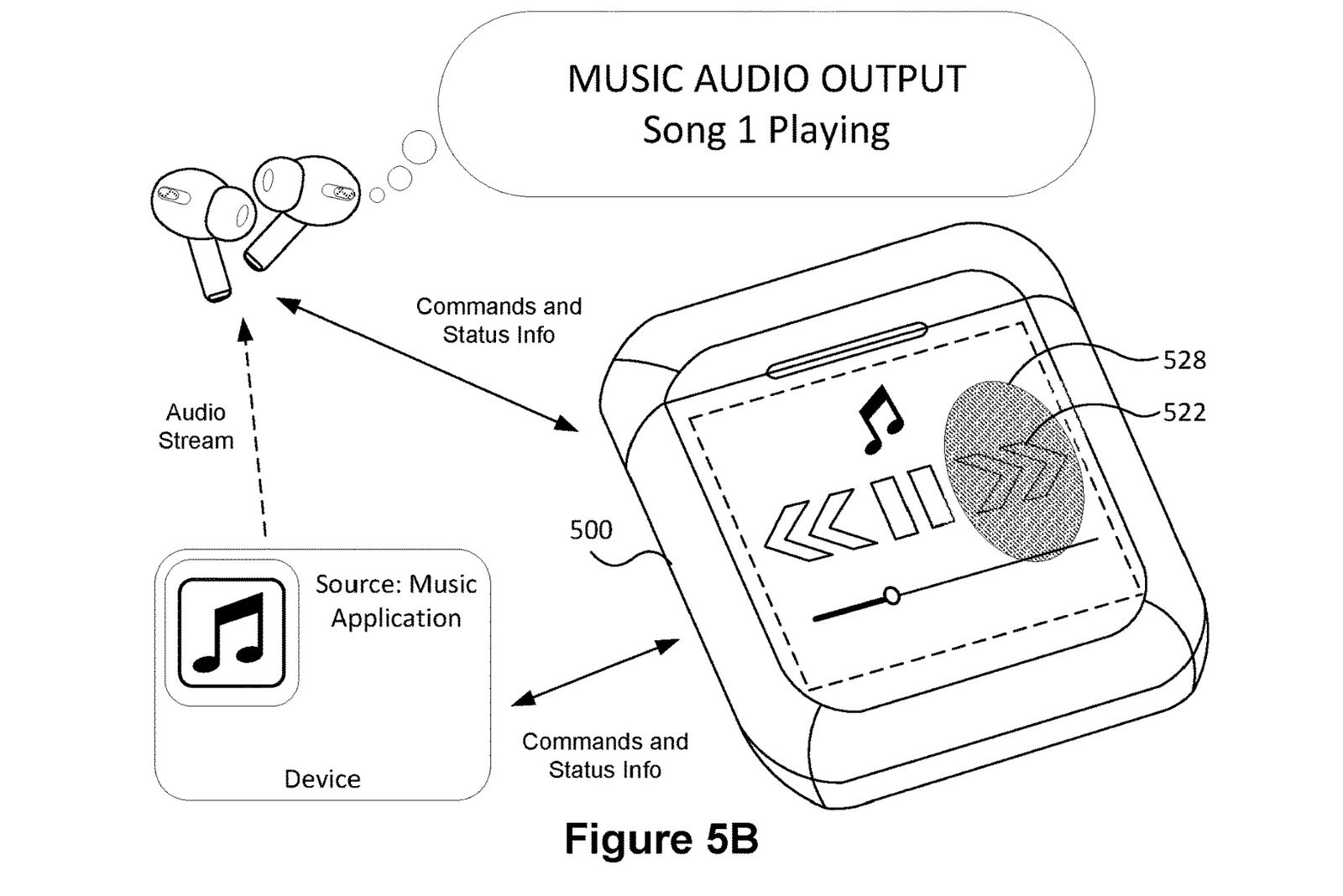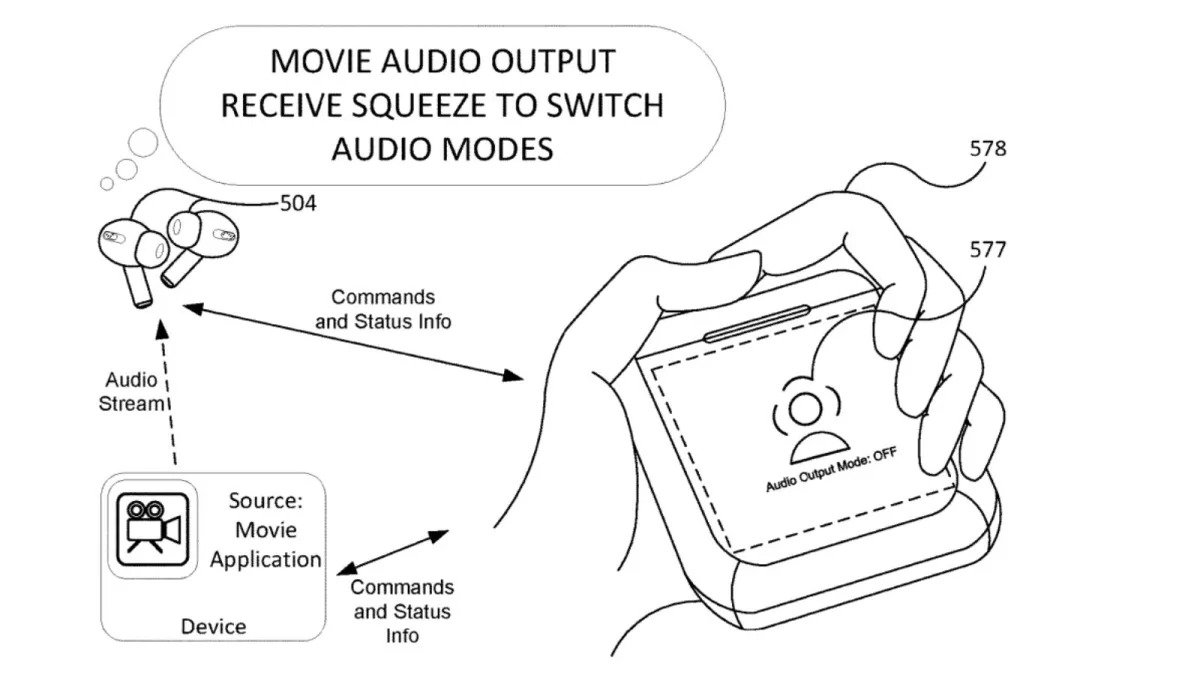If you know me even the slightest bit, you’ll know that I’m a big Apple fan. I have an iPad, Apple Watch, and multiple Macs. And even though I’ve been diving into the world of Android phones, my primary device is still an iPhone 14 Pro. I also always have my AirPods Pro 2 with me, whether that’s at home or when I’m out at Disney parks — they’re always on me in some way or another.
But as much as I like Apple, there are certainly some things that will make me scratch my head and go “Huh?” The latest one is what appears to be a new patent held by Apple that could lead to an AirPods case with an integrated interactive touchscreen.
The patent does what now?

According to a report from MacRumors, Apple originally filed this patent in September 2021, and this patent application was only published last week by the U.S. Patent and Trademark Office.
Titled “Devices, Methods, and Graphical User Interface Interactions with a Headphones Case,” it features designs for an AirPods case that would have a built-in touchscreen display on the front. This would allow users to be able to do things like control audio sources and interact with apps that are currently using the connected device.
In the patent application, it says, “Audio output device cases are commonly passive devices used to charge audio output devices.” But it goes on to basically say that the utility of a headphone case can be enhanced, and user control of wireless headphones can be improved by having a headphone case with an interactive user interface.
The designs from the patent include several ways of controlling audio from the case itself. The main way would be through a capacitive touchscreen, complete with a user interface that has tactile feedback, so you can control and interact with the audio without the need to look at the case itself.
Another method includes using specific gestures, including taps and swipes, to navigate through the onscreen content and even activate Siri. Another scenario involves squeezing the case to change the listening mode, which probably means Noise Cancellation and Transparency.
Apple also goes on in the patent to essentially say that the case could use additional processors and even memory modules to do tasks you normally would with your smartphone or computer.
Okay, that’s nice and all, but … why?

I’m not sure how everyone else uses their AirPods, but when I put the earbuds into my ears, I stash the case back in my pocket, in my bag, or just put it aside. I just don’t really keep it out because it’s not needed until I’m done with my AirPods and need to charge them.
The problem with a charging case with a touchscreen to control and interact with my audio is, well, my iPhone can already do that. I also tend to be actively using my iPhone 14 Pro or iPad or Mac if I use my AirPods Pro 2, so I can already control my audio from those devices — why would I even want to pull out the charging case to do any of that?
According to the filed patent, the case display would also be able to show other information, including the audio source. For example, a call or message or email, or even a movie. But why would I watch a movie on a tiny screen that’s even smaller than my iPhone?

If anything, the real innovation would be the squeezing method. I can see this being interesting and actually useful, as you can just give the case a squeeze in your pocket to activate Transparency or Noise Cancellation while you’re walking and have your phone away. I mean, yes, you could do that directly on the AirPods Pro already, but sometimes the stem sensors can be finicky — giving the entire case a squeeze may work better.
But still, a built-in touchscreen for controlling audio on the AirPods case? I’m just not entirely sold on the idea, and I can only imagine a price increase for such a feature.
Of course, just because Apple has a patent for this doesn’t mean that it will become an actual thing. And in this case, I hope it stays that way. But it appears that JBL has already put a touchscreen on the charging case for its Tour Pro 2 earbuds, so I suppose the idea isn’t as crazy as it seems. Still, I’m skeptical.






